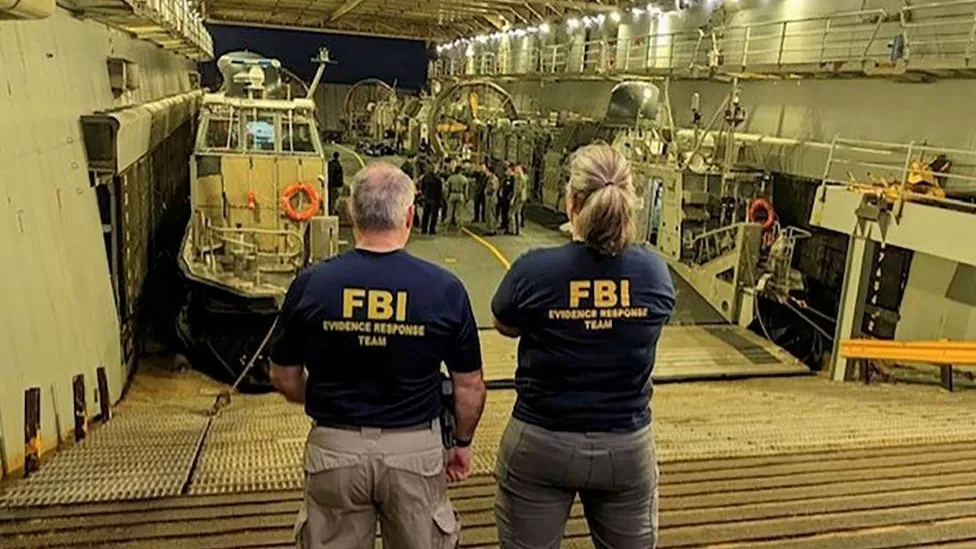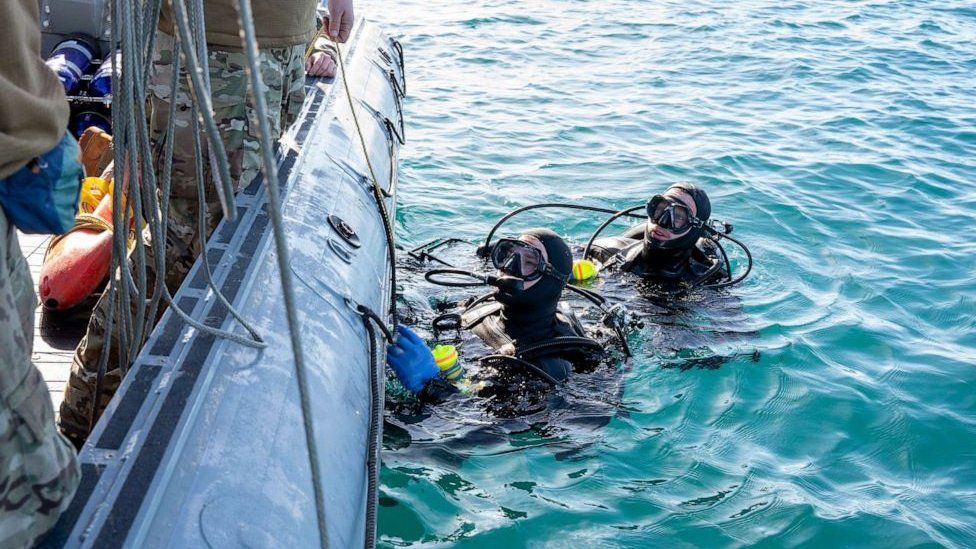
This article is more than
2 year old
The White House has said there is no indication three flying objects blasted out of the sky over the weekend by the US military are linked to alleged Chinese spying.
The objects may be "tied to commercial or research entities and therefore benign", spokesman John Kirby said.
US and Canadian officials have not yet located or recovered any wreckage from the three downed aircraft.
Beijing earlier accused the US of "a trigger-happy overreaction".
China has denied one of its balloons, which was destroyed by a US fighter jet earlier this month off South Carolina, was being used for espionage, saying it was merely a weather-monitoring airship that had blown off course.
At Tuesday's daily news conference, Mr Kirby said it will be difficult to determine the purpose or origin of the three other objects that were destroyed over Alaska, Canada and Michigan until the debris is found and analysed.
"We haven't seen any indication or anything that points specifically to the idea that these three objects were part of the PRC's [People's Republic of China] spying programme," the White House National Security Council told reporters, "or that they were definitively involved in external intelligence collection efforts".
A "leading explanation" being considered by US intelligence, he added, was that "these could be balloons that were simply tied to commercial or research entities and therefore benign".
But he noted that no company, organisation or government had yet laid claim to the objects.

In the most recent strike - over Lake Huron - the first Sidewinder missile fired by a US F-16 warplane missed its target, the top US general has confirmed.
"First shot missed. Second shot hit," said Chairman of the Joint Chiefs of Staff Mark Milley during a visit to Brussels on Tuesday.
"We go to great lengths to make sure that the airspace is clear and the backdrop is clear up to the max effective range of the missile. And in this case, the missiles land, or the missile landed, harmlessly in the water of Lake Huron."
A spokesman for China's Ministry of Foreign Affairs, meanwhile, criticised the American response.
"Many in the US have been asking, 'what good can such costly action possibly bring to the US and its taxpayers?'" said Wang Wenbin on Tuesday.
Sensors from the alleged Chinese spy balloon shot down over the US on 4 February were recovered from the Atlantic Ocean on Monday, and are being analysed by the FBI.
Search crews found "significant debris from the site, including all of the priority sensor and electronics pieces identified" off the coast of South Carolina, said US Northern Command.
The Chinese balloon was being tracked by US intelligence since its lift-off from a base on Hainan Island on the south coast of China earlier this month, US media report.
Shortly after take-off the balloon drifted towards the US islands of Guam and Hawaii before moving north towards Alaska, American officials told CBS News, the BBC's partner.
The unnamed officials say that its path indicates that it could have been blown off course by weather, but that it was back under the Chinese control again by the time it reached the continental US.
The entire US Senate received a classified briefing on Tuesday about the matter from military leaders.
Senate Majority Leader Chuck Schumer said the chamber would launch an inquiry into why the aircraft were not detected earlier.
"It's a good question," Mr Schumer told reporters. "We need to answer it."
Meanwhile, Romania scrambled fighter jets on Tuesday to investigate an aerial object entering European airspace.
But the country's defence ministry said the pilots were unable to locate it and abandoned the mission after half an hour.
